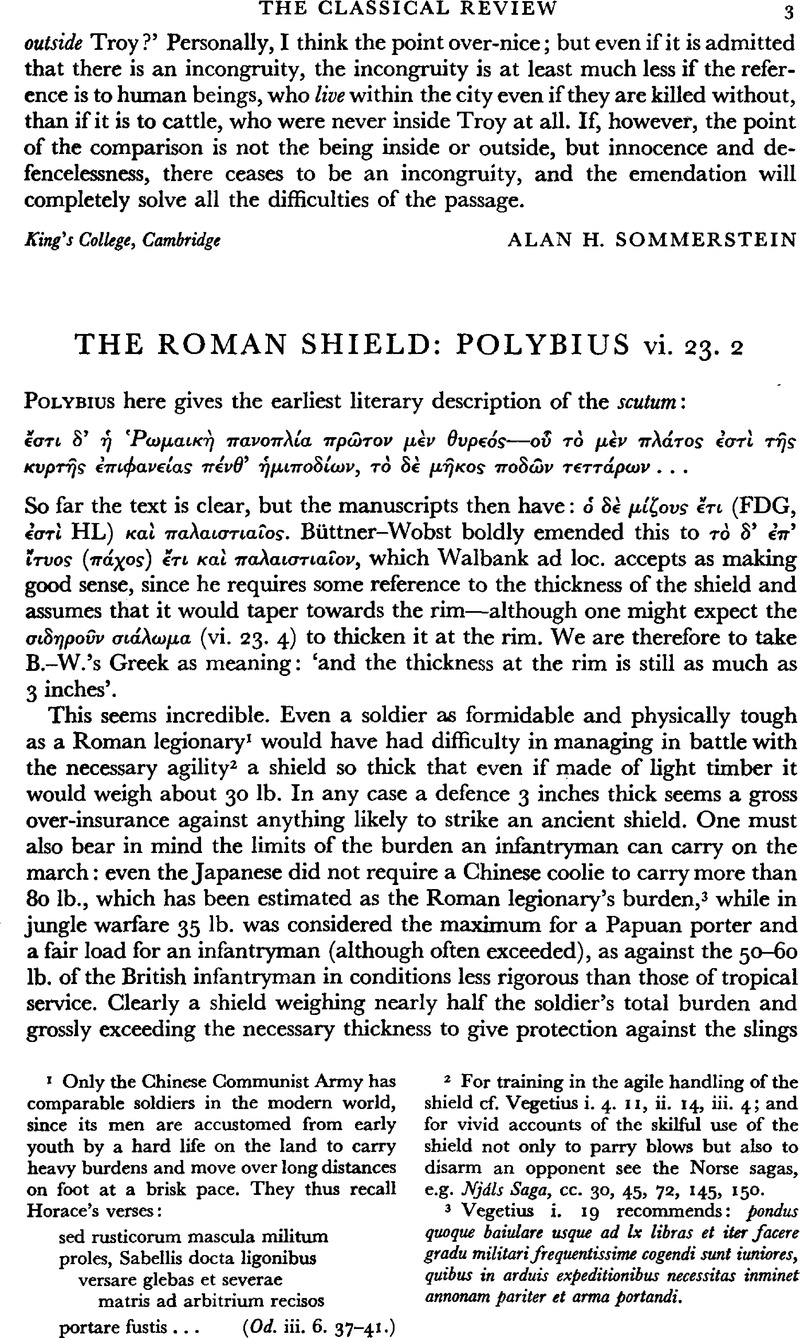Published online by Cambridge University Press: 27 February 2009

page 3 note 1 Only the Chinese Communist Army has comparable soldiers in the modern world, since its men are accustomed from early youth by a hard life on the land to carry heavy burdens and move over long distances on foot at a brisk pace. They thus recall Horace's verses:
sed rusticorum mascula militum
proles, Sabellis docta ligonibus
versare glebas et severae
matris ad arbitrium recisos
portare fustis … (Od. iii. 6. 37–41.)
page 3 note 2 For training in the agile handling of the shield cf. Vegetius i. 4. 11, ii. 14, iii. 4; and for vivid accounts of the skilful use of the shield not only to parry blows but also to disarm an opponent see the Norse sagas, e.g. Njáls Saga, cc. 30, 45, 72, 145, 150.
page 3 note 3 Vegetius i. 19 recommends: pondus quoque baiulare usque ad lx libras et iter facere gradu militari frequentissime cogendi sunt iuniores, quibus in arduis expeditionibus necessitas inminet annonam pariter et arma portandi.
page 4 note 1 In any case the Roman shield, like the modern steel helmet, was intended not to withstand direct hits, but to deflect blows, in which the handling of it by the soldier was important. Cf. Vegetius i. 4 tractare scutum et obliquis ictibus venientia tela deflectere.
page 4 note 2 Note that Vegetius (ii. 15) takes for granted the transfixing of the shield—hardly likely if it had been three inches thick. Moreover, even in training exercises, when one might expect a wider margin of safety to be demanded, shields were regularly pierced on the evidence of Arrian, Tact. 40. 6.
page 4 note 3 D.-S., s.v. clipeus, figs. 1651–2.
page 4 note 4 Ibid., p. 1254b. But the reference to Pliny should be xvi. 77. 209, not vii. 17.
page 4 note 5 Collingwood, R. G. and Richmond, I., The Archaeology of Roman Britain, 307, 319–20Google Scholar. See also Webster, G., The Roman Imperial Army, 128Google Scholar (this reference I owe to my colleague, Mr. A. G. McCready). The Dura Report gives the following description: ‘A rectangular vertical section of a cylinder in shape, 1·02 m. long and 0·83 m. wide following the curve; the chord of the arc is 0·66 m. long. The shield … is constructed of thin strips of plane wood (Platanus orientalis) 0·03–0·08 m. wide and 0·0015–0·002 m. thick in three layers. … The individual strips and the layers are glued firmly together, the whole, 0·005 m. thick, resembling modern plywood’ (The Excavations at Dura-Europos. Preliminary Report of Sixth Season, New Haven, 1936, 456–7). The Report itself should be consulted for a detailed description of the construction and decoration of this unique but well-preserved specimen.
page 4 note 6 For the understanding of this process in the ancient world cf. Theocr. 25. 247–9.
page 5 note 1 For the expression cf. Archim. Aequil. i. 6, ἐπὶ μέσον τοῦ τμάατος (quoted by L.S.J., s.v. μέσος Ia). Archimedes refers to the segment of a line, but τμῆμα is also the technical term for the segment of a circle.